welcome to 3D
Martin Schuhfuss | @usefulthink | m.schuhfuss@gmail.com
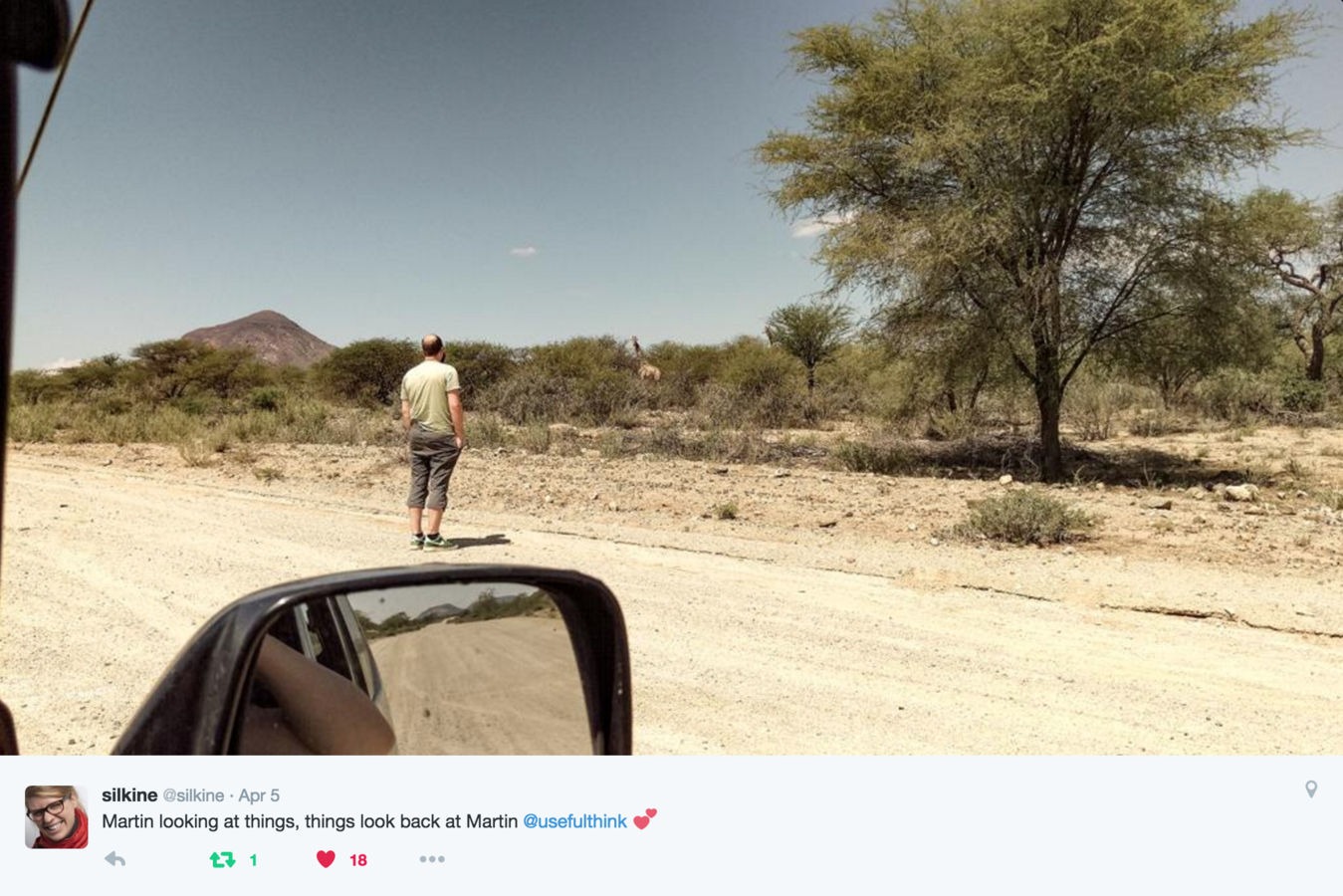
const container = document.querySelector('.container');
const canvas = document.createElement('canvas');
canvas.width = container.offsetWidth;
canvas.height = container.offsetHeight;
container.appendChild(canvas);
const gl = canvas.getContext('webgl');
// ---- setup viewport size
gl.viewport(0, 0, canvas.width, canvas.height);
// ---- clear screen with black
gl.clearColor(0.0, 0.0, 0.0, 1.0);
gl.clear(gl.COLOR_BUFFER_BIT);
// ---- create and compile shaders
const vs = gl.createShader(gl.VERTEX_SHADER);
const fs = gl.createShader(gl.FRAGMENT_SHADER);
// ---- upload and compile GLSL shaders
gl.shaderSource(vs, `
attribute vec3 position;
void main() { gl_Position = vec4(position, 1.0); }
`);
gl.shaderSource(fs, `
void main() { gl_FragColor = vec4(1.0, 1.0, 1.0, 1.0); }
`);
gl.compileShader(vs);
gl.compileShader(fs);
let's draw a triangle...
// [... getContext, init viewport and clear]
// [... create and compile shaders]
// ---- link a program out of the two shaders
const shaderProgram = gl.createProgram();
gl.attachShader(shaderProgram, vs);
gl.attachShader(shaderProgram, fs);
gl.linkProgram(shaderProgram);
gl.useProgram(shaderProgram);
// ---- create a buffer with vertex-data
const vertexBuffer = gl.createBuffer();
gl.bindBuffer(gl.ARRAY_BUFFER, vertexBuffer);
const vertices = new Float32Array([
-1.0, 0.0, 0.0,
1.0, 0.0, 0.0,
0.0, 1.0, 0.0
]);
gl.bufferData(gl.ARRAY_BUFFER, vertices, gl.STATIC_DRAW);
// ---- bind the buffer to the vertex-shader attribute
const positionAttr = gl.getAttribLocation(shaderProgram, "position");
gl.vertexAttribPointer(positionAttr, 3, gl.FLOAT, false, 0, 0);
// ---- draw it. finally.
gl.drawArrays(gl.TRIANGLES, 0, vertices.length);
No really, IT's just a triangle
WTF?
I think there's a better way to explain 3D rendering
...and we don't really need any code for this
Computer-Graphics and 3d-rendering
- almost 50 years of research
- probably one of the best financed areas of research ($100bn/yr in games several hundred more in VFX)
- unbelievably huge scientific field: maths, physics, numerics, radiometry, photometry, colorimetry, ...
[...] I’ll start with the surface of the topic and ask myself what I don’t fully get — I look for those foggy spots in the story where when someone mentions it or it comes up in an article I’m reading, my mind kind of glazes over with a combination of
“ugh it’s that icky term again nah go away” and
“ew the adults are saying that adult thing again and I’m seven so I don’t actually understand what they’re talking about.”
Then I’ll get reading about those foggy spots — but as I clear away fog from the surface, I often find more fog underneath. So then I research that new fog, and again, often come across other fog even further down.
Tim Urban
WHAT IS 3D RENDERING?
use a virtual camera to
take pictures of a virtual environment/scene
FIGURE OUT HOW LIGHT BEHAVES AND WHICH LIGHT ENDS UP ON THE CAMERA SENSOR
simulate how photons would bounce around and find those that hit the camera sensor
problem: there are just way too many photons
rendering techniques
raytracing / PATH-TRACING
Disney's practical guide to path tracing
RAYTRACING / PATH-TRACING
- very accurate rendering
- supports special light behaviour like reflection, refraction, caustics and global illumination
- used by almost everything that doesn't need to be realtime (i.e. all VFX in movies or static renderings)
- computers are not yet fast enough to do this in realtime (ToyStory3: each frame took 2‑15 hours to render)
WEBGL PATH-TRACING DEMOS
radiosity
"A realistic simulation of how light behaves in an environment"
radiosity
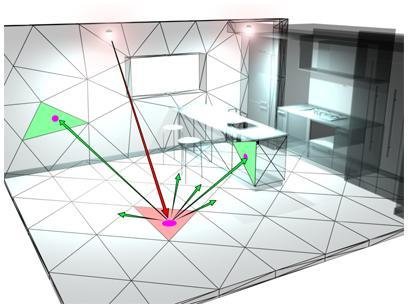
http://www.3dmax-tutorials.com/Radiosity_Solution.html https://de.wikibooks.org/wiki/Blender_Dokumentation:_Radiosity_als_Modellierungswerkzeug
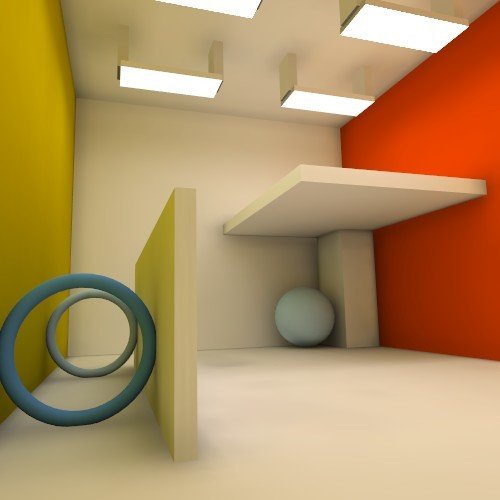
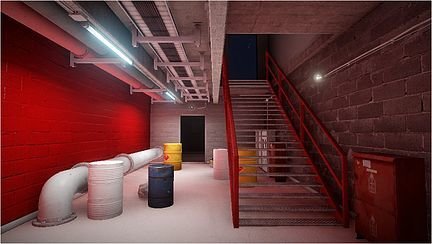
see http://www.cise.ufl.edu/~s11022et/ for more information.
RASTERIZATION / scanline rendering
- used by most realtime applications today
- GPUs are designed for this
- every major game-engine and WebGL implement scanline-rendering
RASTERIZATION / scanline rendering
- objects made from triangles
- triangles are projected onto the screen
- pixel-colors are computed only from data provided for the triangle

MATH
(doesn't hurt, I promise)
COORDINATE SPACES
- frame of reference for vertices
- a point of origin and three axes (x, y, z)
- "right handed" system
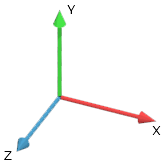
VERTICES
- a vertex describes a point in a coordinate-space
- three components: (x, y, z)

TRANSFORMING VERTICES / MATRIx MULTIPLICATION
- vectors can be transformed (rotation, translation, scaling etc.) using matrix-multiplication
- the matrix is a "recipe" how to convert a vector from one coordinate space into another
- they are everywhere (remember css transform: matrix3d(...)?)
homogenous coordinates
or, "why are there 4 dimensional coordinates everywhere?"
GEOMETRIES
- geometries are defined using triangles* / faces
- all faces together form the object-surface
- vertices for all triangles are defined in object-space
* most 3D environments like DirectX or OpenGL also allow quads as primitives
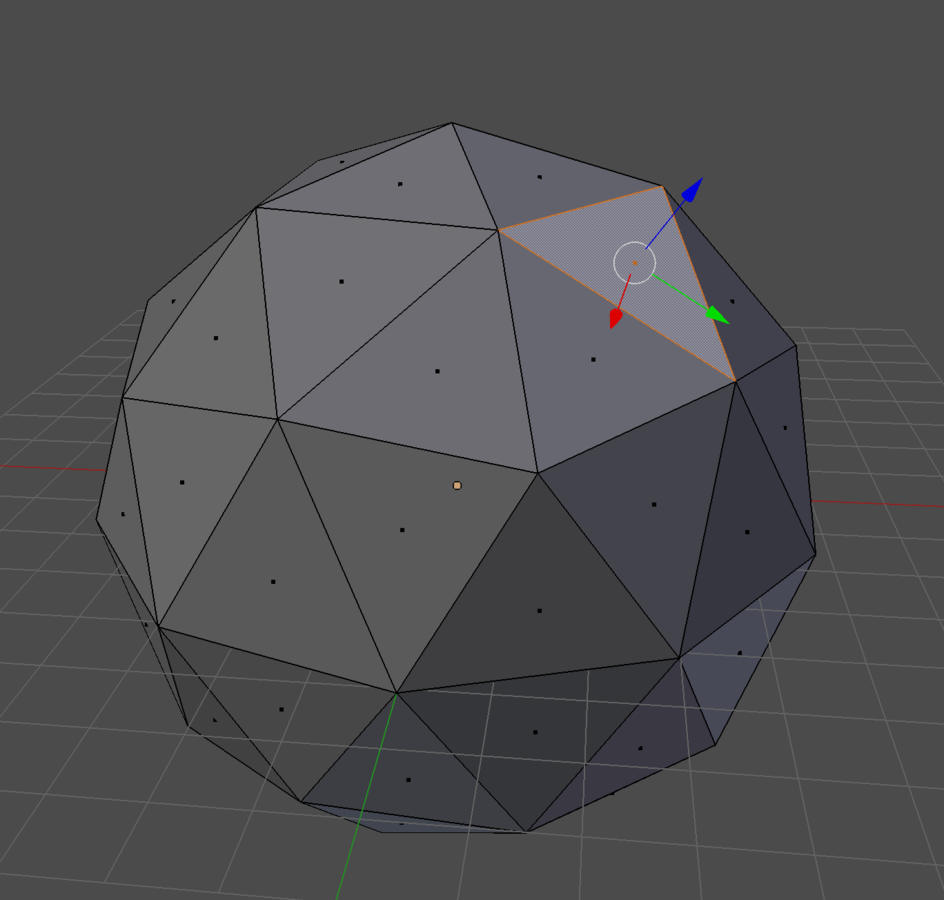
OBJECTS / Meshes
- created from a geometry and material-information
- provide the coordinate space used by the geometry (object-space)
- manage transforms relative to world-space
- hierarchical: can contain objects that are then relative to the parent coordinate space
SCENE-GRAPH
- root-object - parent to all objects rendered
- hosts the global coordinate space all objects are positioned in (world space)
- also contains the camera and lights, which are special types of objects
Camera
- just another object with it's own coordinate space (view-space)
- is positioned to look at parts of the scene
- field of view angles (fov), near- and far-plane define the view-frustrum
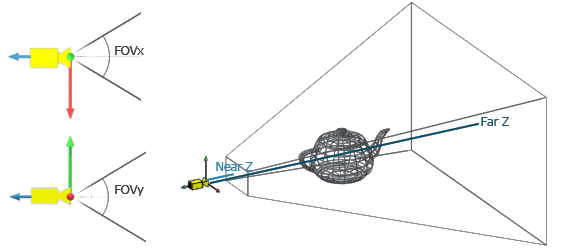
model-, world- AND view-Space

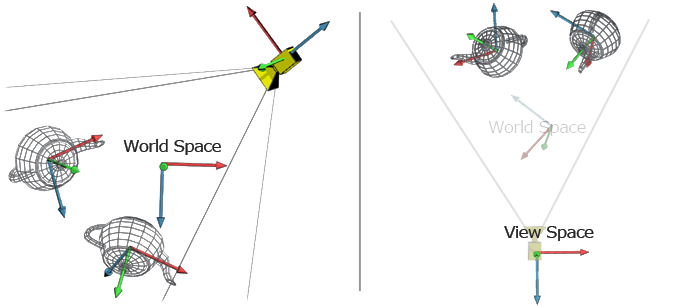
PERSPECTIVE TRANSFORM
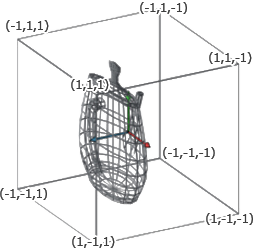
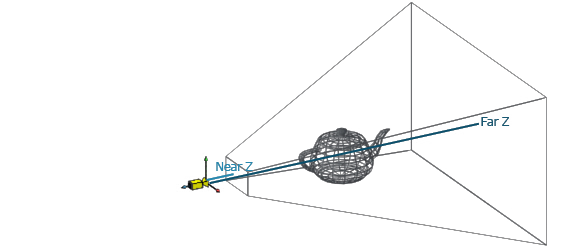
- vertices are transformed from world-space into view-space
- multiplying with a special projection-matrix transforms coordinates into the canonical view volume or clip-space
- everything outside the range [-1, 1] is invisible to the camera and will be clipped
The rendering algorithm
- project all vertices into the canonical view volume
- assemble triangles from sets of three vertices
- rasterize triangles
- compute the color-value for every fragment
- blend color-value with previously computed value for the screen-pixel
Webgl rendering pipeline
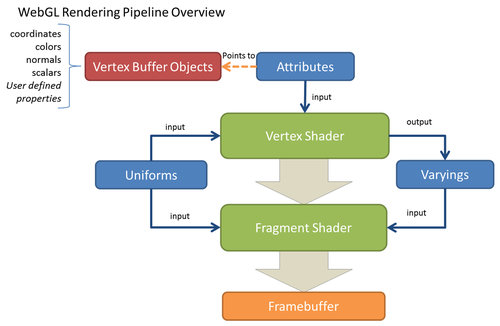
primitive assembly
rasterization
color-blending
Webgl rendering pipeline
DRAWCALLS
- any number of triangles can be passed to the GPU at once, initiating the pipeline to start
- optimizing the number of drawcalls is most important for overall performance
Webgl rendering pipeline
VERTEX-SHADEr
- vertices (world-space coordinates) and other per-vertex data (colors, texture-coordinates, ...) is passed to the GPU as attributes
- constants can be passed as uniform (can be updated per drawcall)
- the vertex-shader will compute clip-space coordinates and pass them back into the pipeline
- can declare special variables (varying) for the fragment-shader
The vertex-shader is run on the GPU for each and every vertex, without any information about other vertices.
Webgl rendering pipeline
PRIMITIVE ASSEMBLY AND RASTERIZATION
- every sequence of three vertices forms a triangle*
- those triangles are then rasterized, or divided based on where exactly display-pixels are covered by the triangle
- these affected pixels are called fragments
* there are other rendering-modes like triangle-strips and fans, but those are ignored here
Webgl rendering pipeline
FRAGMENT-SHADER
- can only access the varying-values defined by the vertex-shader and the uniforms defined for this drawcall
- usually implements lighting equations and various forms of texturing
The fragment-shader is run on the GPU once for every fragment of every triangle, and outputs a color-value for the fragment.
MATERIALS
There's somebody talking about Elm as I write this, I guess this needs to be in another Talk.

QUESTIONS?
please feel free to contact me later for chatting or questions...
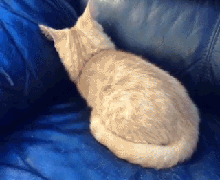
welcome to 3d – hhjs
By Martin Schuhfuss
welcome to 3d – hhjs
- 1,647



